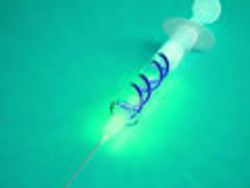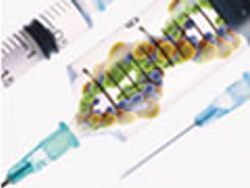Containment-Verification Testing For Pharmaceutical Equipment Performance
A Good Practice Guide from the International Society of Pharmaceutical Engineering provides a framework to assess how well pharmaceutical equipment contains hazardous APIs.
4X-image/E+/Getty ImagesUnderstanding and evaluating the level of containment achieved by a containment system or equipment is crucial for the processing of APIs, particularly potent pharmaceutical compounds. Based on toxicological evaluations, APIs can be placed into hazard or control bands depending on their potency and toxicological effects. This is the first step in the identification of the hazard potential of the new chemical entity (NCE) or API and the associated exposure controls to ensure personal protection and minimize product cross-contamination. Each hazard/control band should be associated with safe handling guidelines that outline the appropriate facility, equipment, and administrative controls to ensure exposure is maintained below the occupational exposure limit (OEL) for the NCE/API. In general, a potent API is defined as one with an occupational exposure limit (OEL) at or below 10 µg/m3 and a highly potent API as having an OEL below 1 µg/m3 (1).
Good industrial-hygiene practice dictates that engineering controls are the primary means to control personal exposure. Containment equipment, such as isolators, contained transfer systems, and other contained chemical and pharmaceutical process equipment, are examples of engineering controls in use today. Containment systems and equipment with integrated containment systems are being designed and used by biopharmaceutical manufacturing facilities for all pharmaceutical operations (i.e., chemical production of bulk API to product formulation to packaging) and for all dosage forms, including solid, parenteral, and others, including inhalation and dermal, to control personal exposure and minimize cross contamination in a multi product facility.
The process of selecting containment equipment and systems should include:
- Performing a process review of the process steps, unit operations, and tasks
- Identifying the APIs, intermediates, and finished products to be handled and processed, including their associated OELs and/or hazard/control bands
- Setting a containment performance target (CPT) for the process
- Specifying and selecting the containment equipment based on the task list and the CPT
- Verifying containment performance by performing a factory acceptance test (FAT) and site-acceptance test (SAT)
- Evaluating containment performance and occupational exposure to workers during actual operations processing the NCE or API.
To provide consistent and repeatable data to evaluate the equipment and/or containment system prior to installation, upon installation, and during operation, it is crucial that testing be performed following a standard methodology. Because the potential exists for both airborne emissions and surface contamination, industrial-hygiene sampling methodologies for both air and surface sampling are used to evaluate the potential emissions that may be generated during normal processing and cleaning of containment systems and equipment (2,3).
The Good Practice Guide: Assessing the Particulate Containment Performance of Pharmaceutical Equipment, from the International Society of Pharmaceutical Engineering (ISPE) describes methodologies for evaluating the containment capability of containment systems and processing equipment in the pharmaceutical and biotechnology industries under defined conditions. (4) This updated guide, first issued in 2005, addresses a broad selection of containment technologies and processing equipment and provides technical guidance and consistent methodologies for evaluating the particulate containment performance (i.e., particulate emissions). The guide defines current good practices and provides information to allow organizations to benchmark their practices and improve on them. Specifically, it provides a methodology to derive data associated with the handling of pharmaceutical ingredients that is useful in the assessment of potential risks. The revised guide was the culmination of a two-year process by the ISPE Containment Community of Practice to revise the original document.
Since first published, the guide has been used by containment-equipment manufacturers, pharmaceutical companies, and industrial-hygiene consultants to perform containment verification assessments for FAT, and/or SAT of containment systems and equipment. It also has been used to evaluate and compare equipment from different suppliers.
Containment-performance-assessment studies
The revised guide identifies crucial issues that need to be addressed prior to, during, and/or at the completion of containment-performance-assessment studies. It guides the user to perform repeatable containment verification testing to assess accurately the containment capabilities of various containment systems and process equipment. Sections provide information and guidance on test protocols, test environment, test material, air and surface sampling, sample analysis, sample interpretation, and reporting.
Table I: Containment equipment test protocols.The guide specifies a methodology using a surrogate material to verify containment performance and specifies several surrogate materials that may be used, including lactose, naproxen sodium, manitol, acetaminophen (paracetamol), insulin, riboflavin, and sucrose. Of these, lactose and naproxen sodium are the most commonly used. The guide also provides containment equipment test protocols to follow when performing the containment verification assessment. These seven protocols are listed in Table I.As noted previously, prior to selection of a containment system or device, a CPT should be identified for the process, providing the containment system supplier with a containment target for the design and construction of the unit. A CPT should also be identified for off-the-shelf units purchased for use in standard applications such as sample weighing or dispensing. If a CPT has not been established, containment verification testing is still applicable to ensure that unit is providing adequate containment for the activities or processes to be performed within the unit.
Figure 1: Area sampler positions for Protocol 5 Ventilated Enclosure, from ISPE Good Practice Guide. Table II shows the corresponding personal, real-time and surface samples.The guide outlines containment verification at the supplier’s site (i.e., FAT) and when installed at the user’s site (i.e., SAT). The purpose for containment verification being performed at the supplier’s site is to identify and correct any deficiencies that may impact the meeting of the CPT prior to delivery. Containment performance verification testing should only be performed by qualified industrial hygienists, preferably under the direction of a certified industrial hygienist.
Table II: Sampling details.The seven protocols in the guide state the recommended positions for air, real-time air monitoring, and surface samples. Figure 1 from the ISPE Good Practice Guide shows the sampler positions for a ventilated enclosure. Protocol 5, Ventilated Enclosure, specifies the sampling locations for performing the containment verification testing.
Ensuring successful testing
Purchasing a containment system or equipment from a reputable supplier should ensure the achievement of containment objectives. Proper planning and testing, however, is needed to obtain accurate reliable data during a containment-verification test. The following steps can help ensure a successful containment-verification test:
1. Set a CPT as an airborne concentration (µg/m3) based on the OEL of the API to be handled.
2. Select a surrogate material to use during containment performance verification. Some of the chemical/physical properties to be considered in the selection of the surrogate include:
- Powder-flow characteristics
- Detection sensitivity
- Pharmacological activity
- Cost
- Availability
- Cost of analysis
- Available particle-size range
- Consistency of particle size
- Ease of disposal
- Solubility in water
- Stability
3. Develop a sampling strategy that includes:
- Type of sampling (air and/or surface sampling)
- Where to sample
- The number of samples to be taken
- The types of samples (area and/or personal) to be taken
- The duration of each sample
- At least three iterations (runs)
- Utilization of different operators (if possible)
- Limit of detection for the surrogate
4. Use an accredited laboratory for the analysis. Verify there is a validated method for the airborne and surface surrogate samples with sufficient sensitivity to evaluate the containment performance. >
5. Review the containment equipment and/or system with the users prior to testing. >
6. Perform a dry run without the surrogate material prior to testing. >
7. Keep the surrogate material in an area or room outside the test room or process room. >
8. The containment-verification report should describe the testing methodology and provide an objective interpretation of the results. The data collected should be analyzed consistently and according to accepted statistical methodologies. An appropriate number of samples as noted previously (minimum of three runs) should be taken to reduce the variability and maintain consistency when evaluating the containment equipment. Finally, the use of traditional statistical measures such as the 95th percentile (if a sufficient number of samples are taken) or using European Standard EN 689:1986 or Bayesian analysis to confirm that airborne release concentrations will not normally exceed the CPT. >
Conclusion
Containment-verification testing of equipment and containment systems is an accepted means for evaluating the containment capability of containment systems and processing equipment in the pharmaceutical and biotechnology industries under defined conditions. ISPE’s Good Practice Guide: Assessing the Particulate Containment Performance of Pharmaceutical Equipment describes the methodologies for performing containment verification testing for both FAT and SAT scenarios. The guide specifies a methodology using a surrogate material to verify containment performance by setting a CPT and then performing air and surface sampling as outlined in standard protocols for containment systems. By following the guidelines, users can generate accurate and repeatable data to perform statistical analysis and confirm that airborne-release concentrations will not normally exceed the CPT. >
References>
1. B.D. Naumann and E.V. Sargent, “Setting Occupational Exposure Limits for Pharmaceuticals,” Occup. Med. , 12(1): 67-79 (1997). >
2. OSHA, Sec. II: Ch. 1, “Personal Sampling for Air Contaminants,” in OSHA Technical Manual (OTM) (Washington, DC, June 24, 2008). >
3. OSHA, Sec. II: Ch. 2, “Occupational Skin Exposure V. Wipe Sampling Methodology,” OSHA Technical Manual (OTM) , (Washington, DC, June 24, 2008). >
4. ISPE, Good Practice Guide: Assessing the Particulate Containment Performance of Pharmaceutical Equipment (Second Edition, Tampa, FL, 2012) >
All figures and tables courtesy of the International Society of Pharmaceutical Engineering.




